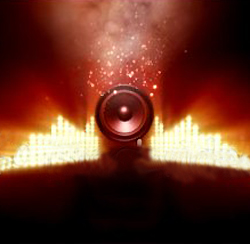“So how many watts can this loudspeaker take?” The technical answer is that it depends on the thermal and mechanical limits of the drivers and crossover components.
The practical answer is that it depends on the program material played: its peak/average ratio or transient content and spectral (frequency) content.
The REAL question is not what is the power handling, but what is the OPTIMUM size power amplifier to use on a loudspeaker?
Rule of Thumb
For a rule of thumb the best answer is found using what is commonly called the loudspeaker’s RMS (root mean square) power rating. Use an amplifier that is twice the RMS rating. If you can’t find an amplifier with that exact rating, multiply this power rating by 0.8 and also by 1.25 to find a range of acceptable power.
Example: A loudspeaker has a 250-watt RMS rating. Twice this is 500 watts. Therefore the acceptable range for the power amplifier to use is from 400 watts (0.8 x 500) to 625 watts (1.25 x 500). Anything larger is potentially excessive power. Anything smaller can cause damage from the amplifier clipping. Remember that the power amplifier output you select must be rated for the nominal impedance of the loudspeaker (i.e., 16, 8, 4 or 2 Ohms).
The RMS rating represents the thermal power limit for the loudspeaker. It is also a good number to use for comparing products. Twice the RMS rating represents a realistic scenario for most actual audio signals. This is 3 dB more power than the RMS rating. An amplifier’s RMS rating is based on a sine wave measurement. The peak power in a sine wave is 3 dB more than the RMS power. Therefore using twice the RMS power rating for the loudspeaker provides 6 dB more power for short term power peaks.
A good loudspeaker can easily handle this. Why? The RMS rating for professional loudspeakers is almost always measured using pink noise for a test signal. The content of this test signal is an RMS level with peaks that are 6 dB above the RMS level. Thus testing a loudspeaker with pink noise requires an amplifier that can produce power peaks of 6 dB above RMS level of the input signal to the loudspeaker without clipping. The rule of thumb provides an amplifier with this capability.
Real World Audio Signals
Real audio signals usually have peaks at least 10 dB peaks their RMS level. Therefore, with a properly sized amplifier just below clipping on those peaks, the RMS value of typical audio signals will be at least 3 dB below or half of the loudspeaker’s RMS rating. This provides a margin of safety.
Still Possible to Damage a Loudspeaker
Having said this, it is entirely possible damage a loudspeaker with an amplifier that is in the “rule of thumb” power range. Why? Because power handling depends on the type of input signal and the user – not the manufacturer – controls the input signal in actual use.
For example, the RMS and peak levels can be about equal on compressed audio signals and for certain signals from instruments like synthesizers or highly processed electric guitars. This means any amplifier power capability above the loudspeaker’s RMS rating can damage it!
Also, no matter what size the amplifier is, clipped signals are death to loudspeakers, even if the clipping occurs in the mixer, equalizer or other signal processor.
There is not a perfect answer to the power handling question. This rule of thumb is a realistic guide for the optimum size power amplifier to use on a loudspeaker for MOST live audio signals. It allows the loudspeaker to be used to its maximum specified power rating.
Caveat About Distortion
Almost no loudspeakers are rated for their distortion at maximum power. For this reason there is nothing implied by the manufacturer in the maximum power rating that says a loudspeaker will still sound good at its maximum power rating. If you find that a loudspeaker “sounds bad” when run near its maximum rating, then the maximum distortion that you find tolerable will be the limiting factor rather than the maximum power rating.
Note: This applies to professional loudspeakers from reputable manufacturers, and includes drivers as well as complete loudspeaker systems.















